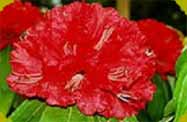|
Aconitum bisma
(Buch-Ham) Rapiacs

|
Species |
Abelmoschus manihot (L.) Medikus |
|
Local Name |
Beshuma (Nep) |
|
Synonym |
A.palmatum
D.Don |
|
Family |
Ranunculaceae |
|
Habitat |
A biennial herb thrives well in cold region. |
|
Distribution |
Distributed to alpine region, moist fir and Rhododendron
forests and on alpine slopes, 2750- 3700 m. |
|
Sikkim |
Dzongri, Changu, Nathang, Jelepla,
Memenchu Lake, Kupup, Yakla (14000 ft) Lachung -Yu
mesamdong, Yumthang, Green lake, Kishong |
|
Out side |
West Bengal (Gosa, Moley Phalut,
Sandokpo, Bikhay Banzyang, 3300 3800 m) Nepal, Southern
Tibet, (3,000 m and 4,800 m) Bhutan (Chelai la, Tangchu),
Kohima. |
|
General |
Himalaya (Garhwal- Arunachal Pradesh), South Tibet,
South China. |
|
Morphological |
Root biennial, paired, tuberous; daughter- tuber shortly
come to long- cylindrical often irregularly shaped, 4 to
more than 10 cm long, 0.75- 3 cm, thick, simple or
branched, sometimes flexuous or twisted, bearing root
fibres, some of which are thread like from the base and
break off easily. While other are much thickened at the
base or thick- cylindrical, light- brown, smooth,
fracture more or less horny and brownish in the thickest
part of full- grown samples, almost farinaceous and
white towards the tips and in the root- branches,
cambium discontinuous forming isolated strands of very
varying shape and size. Stem erect sometimes slightly
flexuous in the upper part, simple or nearly so
inclusive of the inflorescence 2- 4 ft high, stout,
hollow, glabrous, shining. Leaves scattered, rather
distant upto 10, rarely more or the lowest usually
withered at the time of flowering, quite glabrous or the
uppermost finely pubescent on the nerves below; Petioles
slender 4- 10 cm long; blade orbicular cordate to
reniform with a very wide sinus. Flowers greenish blue
in few- flowered panicles; follicles 2.5- 3.0 cm long;
seeds blackish, obovoid, obscurely winged along raphe,
transversely lamellate. |
|
Flowering |
August-October |
|
Fruiting |
September-November |
|
History |
|
|
Parts |
Roots |
|
Status |
Critically endangered |
|
Phytochemistry |
Four new diterpenoid alkaloids- 15
deacetylvakognavine, palmadine, palmasine and
6-acetylheteravisine isolated along with vakognavine,
heteravisine, isoatisine and hitidine, structures of new
compounds elucidated (Tetrahedron Lett. 1988,29,1875). |
|
Agrocultivation |
|
|
Reference |
1. Anonymous (1985). The Wealth of
India (Vol. I A). Publications and Information
Directorate, CSIR. New Delhi. 59- 60.
2. Kirtikar, K.R., B.D. Basu (1993).
Indian Medicinal Plants. (Vol- I) Bishen Singh Mahendra
Pal Singh, Dehradun. 50- 53.
3. Anonymous (1992). The Useful
Plants of India. Publications and Information
Directorate, CSIR, New Delhi.11.
4. Progress Report of the Project
"Studies on Medicinal Plants of Sikkim" (1998- 2001).
State Council of Science and Technology for Sikkim.
5. Bhujel, R.B. (1996). Studies on
the Dicotyledonous Flora of Darjeeling District.
Unpublished PhD Thesis University of North Bengal. 50. |
|
Medicinal |
Tuber extract is medicinally used for high fever and
stomach troubles and the root like quinine is intensely
bitter, used in combination with long pepper for
vomiting, diarrhoea and bowel complaints. Externally it
is used as an application for rheumatism, sharp cuts and
wounds. It is also used as a tonic. |
|
Ayurvedic |
|
|
Unani |
|
|
Traditional |
|
|
Others |
|
|
Prepartation |
|
|
Picture |
|
|
|
|
|

Rhododendron


Amongst the many
floral treaties of Sikkim Himalaya one of the earliest ones may be
found over the genus Rhododendron (Gk. rhodo = red, dendrons = tree
). |
| |
|
|
|

Orchid


Orchid
known for their brilliance in colors, unusual shapes
attractive growth habits, variety in fragrance and
exquisite beauty can attract any nature lovers.
|
| |
|
|
|

Medicinal Plant


Sikkim
with its total geographical area of 7,096 sq km is
bestowed with a huge diversity of flora and fauna.
|
| |
|
|
|
|
|